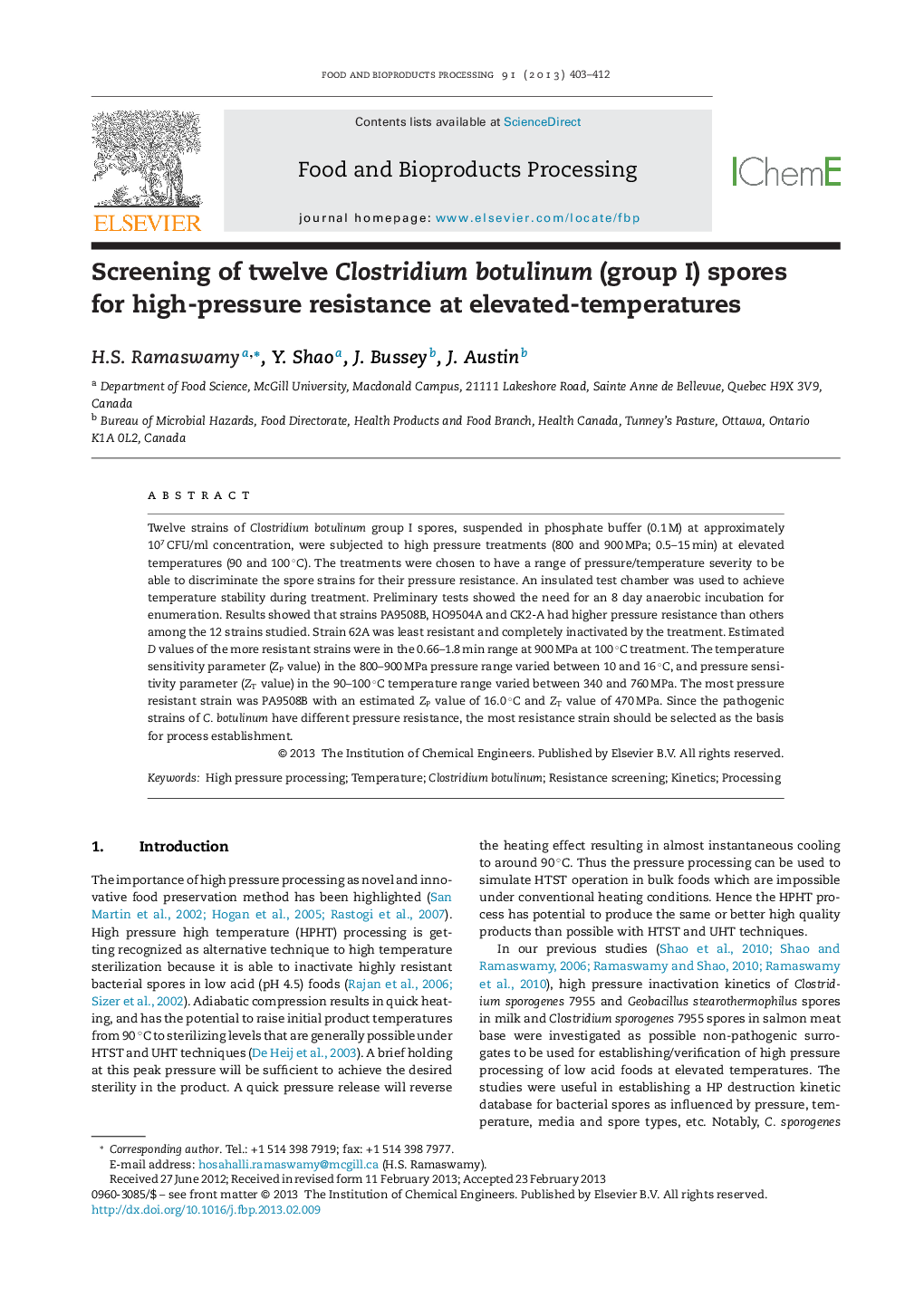| Article ID | Journal | Published Year | Pages | File Type |
|---|---|---|---|---|
| 19106 | Food and Bioproducts Processing | 2013 | 10 Pages |
Twelve strains of Clostridium botulinum group I spores, suspended in phosphate buffer (0.1 M) at approximately 107 CFU/ml concentration, were subjected to high pressure treatments (800 and 900 MPa; 0.5–15 min) at elevated temperatures (90 and 100 °C). The treatments were chosen to have a range of pressure/temperature severity to be able to discriminate the spore strains for their pressure resistance. An insulated test chamber was used to achieve temperature stability during treatment. Preliminary tests showed the need for an 8 day anaerobic incubation for enumeration. Results showed that strains PA9508B, HO9504A and CK2-A had higher pressure resistance than others among the 12 strains studied. Strain 62A was least resistant and completely inactivated by the treatment. Estimated D values of the more resistant strains were in the 0.66–1.8 min range at 900 MPa at 100 °C treatment. The temperature sensitivity parameter (ZP value) in the 800–900 MPa pressure range varied between 10 and 16 °C, and pressure sensitivity parameter (ZT value) in the 90–100 °C temperature range varied between 340 and 760 MPa. The most pressure resistant strain was PA9508B with an estimated ZP value of 16.0 °C and ZT value of 470 MPa. Since the pathogenic strains of C. botulinum have different pressure resistance, the most resistance strain should be selected as the basis for process establishment.
► High temperature–high pressure destruction of twelve Clostridium botulinum strains were compared. ► Pressure resistance of C. botulium varied significantly between strains. ► The most resistant strain was PA9805B. ► This research has relevance to establishing pressure assisted thermal sterilization (PATS) of low acid foods.
